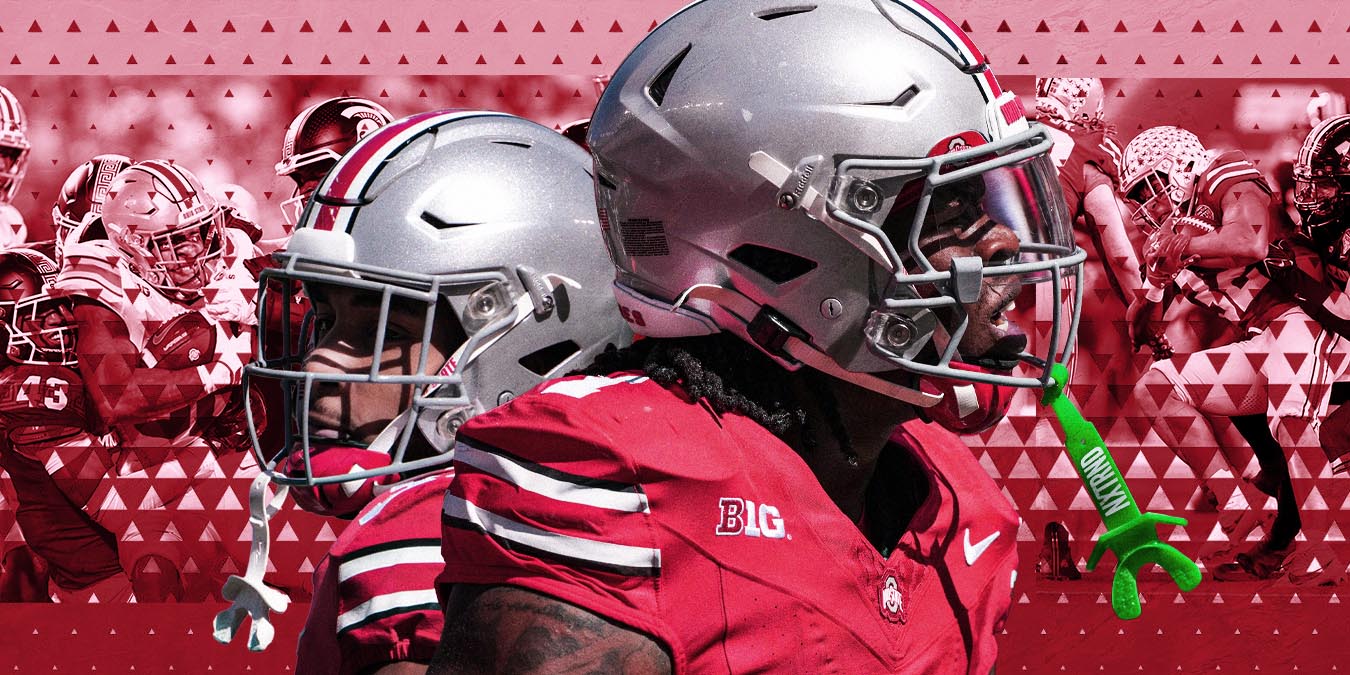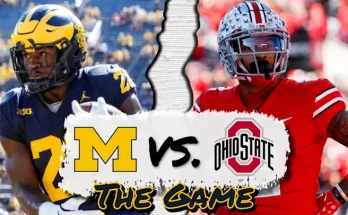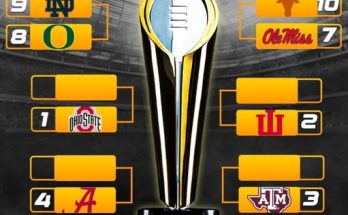This Statistic Demonstrates How Badly the Ohio State Football Team Has Performed This Season
In the world of college football, Ohio State is a program that typically stands as a symbol of excellence and dominance. With a rich history of success, including multiple national championships, Big Ten titles, and Heisman winners, expectations for the Buckeyes are always high. So, when a season unfolds with disappointing outcomes, it is not only a source of frustration for fans but a startling shift in a legacy built on excellence.
This article focuses on one specific statistic that epitomizes how badly Ohio State has performed this season, delving into why it’s so striking and what this tells us about the team’s struggles.
Understanding Ohio State’s Current Struggles
As of the current season, Ohio State football is struggling in ways that have caught many off guard. Historically, they’ve been a powerhouse, regularly contending for national championships and securing a place in the College Football Playoff (CFP) year after year. But this season has been different. From early-season setbacks to inconsistent play, the Buckeyes have found themselves facing a variety of challenges that have affected their performance. While some may point to coaching adjustments, injuries, or player development issues, the reality is that Ohio State simply hasn’t lived up to expectations.
The Statistic: “Ohio State’s Red Zone Efficiency Drops to 60%”
One of the most telling statistics this season is Ohio State’s red zone efficiency, which has plummeted to 60%—a stark contrast to the team’s usual performance in this area. The red zone refers to the portion of the field from the opponent’s 20-yard line in, and for any top-tier college football team, success in the red zone is vital. Historically, Ohio State has been known for its ability to convert these scoring opportunities, converting touchdowns when they get inside the 20-yard line.
A 60% efficiency rate, however, indicates significant trouble. Let’s break down why this statistic is so concerning and what it tells us about the Buckeyes’ struggles.
Red Zone Efficiency: What It Means
Red zone efficiency is one of the most important metrics for evaluating an offense’s ability to capitalize on scoring opportunities. Simply put, it measures how often a team scores (either a touchdown or a field goal) when they enter the red zone. In Ohio State’s case, this 60% efficiency rate suggests that they have been turning over the ball, settling for field goals, or even failing to score altogether in these key moments.
For a team like Ohio State, known for producing high-powered offenses, this drop is alarming. A team that has regularly averaged well above 80% efficiency in past seasons is now underperforming significantly when it matters most.
Analyzing the Breakdown of Red Zone Issues
- Turnovers at Critical Moments One of the biggest culprits contributing to Ohio State’s low red zone efficiency has been turnovers. In crucial moments, the Buckeyes have been prone to giving up possession, either through interceptions or fumbles. A turnover in the red zone not only kills a drive but also represents a massive lost opportunity to put points on the board. Ohio State’s quarterbacks, whether it’s a new starter or an experienced leader, have shown a tendency to force passes or mismanage the ball under pressure.
The consequence? Drives that should end in points turn into turnovers that not only deflate the offense but also give the opposing defense a boost.
- Inconsistent Offensive Line Play Another critical issue that has plagued Ohio State’s red zone performance is their offensive line play. Known for their dominant trenches in years past, this season, Ohio State’s offensive line has struggled to create enough push to establish the run game. In short-yardage situations, particularly in the red zone, the Buckeyes have often found themselves stuck at the line of scrimmage or losing yards.
With running backs unable to consistently gain yards in short-yardage situations, Ohio State has been forced to rely more heavily on the passing game, which hasn’t always been in sync. This inconsistency in the run game has affected their ability to finish drives effectively.
- Playcalling and Strategy Another factor contributing to Ohio State’s disappointing red zone efficiency is a potential disconnect in playcalling. In past seasons, the Buckeyes have been known for mixing up their playcalling with a blend of run-heavy and pass-heavy plays, keeping the defense on its heels. This season, however, the playcalling has appeared more predictable in critical red zone situations.
A lack of creativity or a failure to exploit mismatches in these moments has led to stalled drives. Whether it’s a refusal to try more unconventional plays or an over-reliance on a single approach, the Buckeyes’ coaching staff has yet to find the right formula to succeed inside the red zone.
Why This Statistic is So Striking for Ohio State
Ohio State has long prided itself on being able to execute in the red zone. Their history is replete with big-play offenses that know how to finish drives when it matters. Whether through power running backs, precise passing attacks, or clutch moments from quarterbacks, the Buckeyes have typically had the tools to convert opportunities into points.
This 60% red zone efficiency reflects a significant departure from that standard, and it paints a picture of an offense that is often out of sync, unable to take advantage of scoring chances. For Ohio State, a program that has dominated in the Big Ten and regularly competed for national championships, this is a major red flag.
Moreover, this statistic is even more significant given Ohio State’s history of winning close games and their reliance on efficient, opportunistic offense. In seasons where they have failed to capitalize on red zone opportunities, they’ve seen games slip away—whether against archrivals like Michigan or in key bowl matchups.
The Larger Impact: The Team’s Overall Performance
This dip in red zone efficiency directly correlates with Ohio State’s overall performance this season. In games where they’ve faced stiff competition, such as key matchups in the Big Ten or high-stakes non-conference games, the Buckeyes have been unable to finish drives. More often than not, this has resulted in narrow defeats or struggles to put away inferior opponents.
- Losses in Key Games When Ohio State has faced teams with similar or superior talent, their inability to score in the red zone has led to frustration. In close games, every possession counts, and settling for field goals or turning the ball over in critical moments has cost them. A team that should be scoring in the 80% range inside the red zone simply cannot afford to waste opportunities in such competitive environments.
- Defensive Struggles Resulting from Offensive Inability to Capitalize Another consequence of Ohio State’s struggles inside the red zone is the pressure it places on their defense. In past seasons, when Ohio State’s offense was clicking, the defense could afford to be more aggressive, knowing that they could rely on the offense to put points on the board. This season, however, with offensive production stalled, the defense has had to pick up the slack. While the defense has had some strong individual performances, the increased pressure has led to breakdowns in coverage or missed tackles, as Ohio State’s defense has been on the field more than it would like.
Fan Reactions: The Toll of Unmet Expectations
Buckeye fans have always had high expectations, and for good reason. Ohio State’s history and pedigree in college football set the bar extremely high. For them, a season like this—marked by poor red zone efficiency and uncharacteristic losses—has been hard to stomach. Fans, often seen as one of the most loyal and vocal in college sports, have been vocal in expressing their frustration.
On social media, there’s been a steady stream of criticisms, with many pointing to the red zone stat as a key indicator of why Ohio State has failed to meet expectations. The consensus? A lack of focus and execution when it matters most.
Looking Ahead: The Need for Improvement
Ohio State’s issues in the red zone, however, are not insurmountable. With a talented roster that includes elite playmakers, the team has the tools to turn things around. But it will require a serious reevaluation of both offensive strategy and individual player execution. If Ohio State is to return to its former glory, this statistic—the 60% red zone efficiency—needs to be addressed quickly.
To fix this, the Buckeyes must focus on:
- Improving Offensive Line Play: The first priority should be getting the offensive line back to its dominant form. In short-yardage situations, Ohio State needs to re-establish its ability to push the defense off the ball.
- Quarterback Development: Whether the Buckeyes stick with their current starter or opt for a change, improving quarterback play in high-pressure moments will be crucial. The quarterback must develop better decision-making and poise in the red zone to avoid turnovers.
- Creative Playcalling: Ohio State needs to mix things up more inside the 20-yard line, perhaps incorporating more misdirection or unconventional plays that can throw off the defense and keep them guessing.
Conclusion: A Wake-Up Call for Ohio State Football
While 60% red zone efficiency may seem like just one stat in a larger picture, it is an undeniable indicator of Ohio State’s offensive struggles this season. For a program that prides itself on finishing drives, this lack of execution is a stark reminder of how critical the fundamentals are in college football. With the right adjustments, Ohio State can turn the tide, but if this statistic persists, the Buckeyes may find themselves on the outside looking in when the season ends, watching from the sidelines as other teams take their place in the College Football Playoff.
The Buckeyes have time to correct their course—but they must address this key issue and return to their winning ways.



